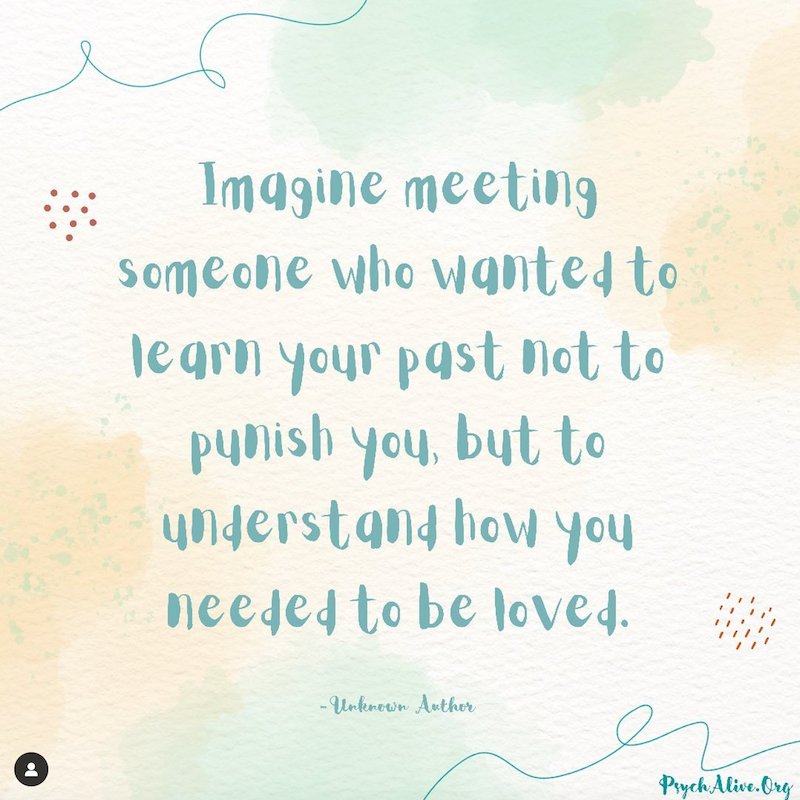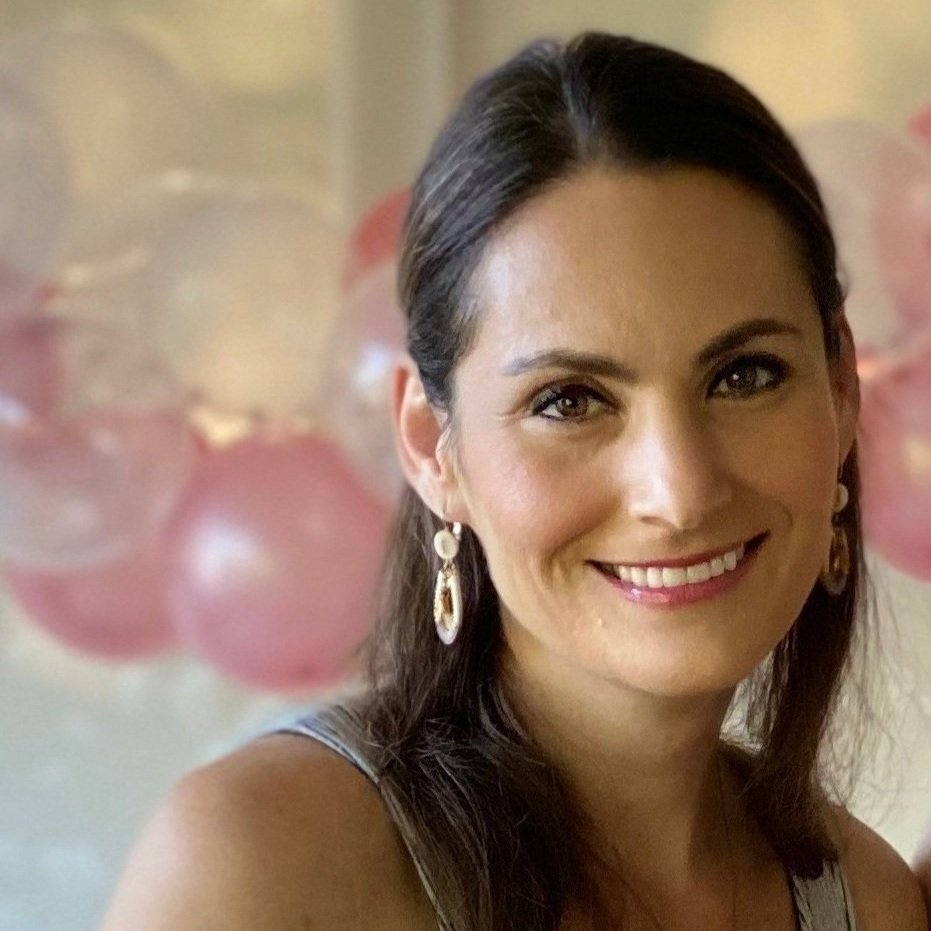Ask This Exact Question In Your Next Therapy Session If You’re Feeling Stuck
It will take more than one session to answer, but it could change the trajectory of your entire life.
by Carolyn Firestone
In an age when self-help gets roped into industry and “therapeutic” advice gets dished out on Instagram, we realize how reductive it would be to say that a single theory could solve all our problems.
However…if forced to pick one, we might choose attachment theory.
And this is why.
Attachment theory focuses on the bonds we formed early in our lives, particularly with our parents or significant caregivers. Our attachment patterns develop based on how these figures responded to us and how they met (or failed to meet ) our needs, particularly in times of distress.
These incredibly early patterns serve as models for how we expect people to treat us and relationships to work throughout our lives. Which means that every meaningful relationship we have can get filtered through an old, distorted lens prescribed by interactions with the imperfect people who raised us.
All of this leads us to why asking one specific question can unleash a sea of answers to all the other questions we ask in therapy. And that question is:
“Who did I go to for comfort as a child?”
According to Dr. Daniel Siegel, neuropsychiatrist and NY Times bestselling author of Parenting From The Inside Out (among others), for a child to form a secure attachment, they must experience the 4 S’s, which are to feel:
Safe
Seen
Soothed
…and therefore…
Secure.
If you imagine for a moment who you turned to to have these basic needs met as a child and how these needs were responded to, you’ll be offered clues as to the attachment pattern you may have formed to the people who taught you the very nature of how relationships work.
So, why dig up the past and explore your attachment pattern?
It can take some convincing for us to dive consciously into confusing or painful dynamics from our history. However, the process can unlock answers to many of the confusing and painful challenges we struggle with today.
Learning our attachment pattern helps us make sense of what baffles us about ourselves. Why do we get triggered in such frustratingly specific ways? Why do we self-sabotage? Deny ourselves? Or react in all the off ways we do in our closest relationships?
“The fantastic news is that if you can make sense of your childhood experiences—especially your relationships with your parents—you can transform your attachment models toward security,” said Siegel. “The reason this is important is that relationships— with friends, with romantic partners, with present or possible future offspring—will be profoundly enhanced.”
What are the 4 early attachment patterns?
1. SECURE ATTACHMENT
As we mentioned, a secure attachment arises from a child having a parent who was emotionally attuned to them “enough” of the time. What’s enough? you might ask. Well, some research shows just being in sync around 30% of the time is sufficient to establish security.
If a parent can consistently be a safe, soothing and secure base from which their children can venture out and experience the world, that child is likely to develop a secure attachment with the parent.
How does having had a secure attachment affect us as adults?
When we’re fortunate enough to experience a secure attachment in childhood, we carry more inner security with us into adulthood. According to PsychAlive, a person with a secure attachment holds “a positive view of themselves, their partners and their relationships. Their lives are balanced: they are both secure in their independence and in their close relationships.”
2. ANXIOUS AMBIVALENT ATTACHMENT
An anxious attachment can form when a parent is inconsistent, sometimes meeting the child’s needs with nurturance and attunement, and other times, being either dismissive and rejecting or intrusive and over-bearing.
This leaves a child confused, insecure, and often desperate to elicit an attuned response from their unpredictable parent. They may not feel trusting or certain of what to expect, so they cling to the parent, desperate for their focused attention. Children with this type of parent tend to feel confused and insecure. As much as they crave the parent’s attention, they may still struggle to feel soothed by them when in distress.
How does having had an anxious ambivalent attachment affect us as adults?
Unfortunately, that feeling of insecurity and desperation can follow the child into adulthood. They tend to be more self-critical, lacking a base level of inner confidence. And their thirst for security, being so old, is hard to relieve.
This can leave the person feeling desperate, jealous, or unsure, particularly in their romantic relationships. They may repeatedly seek reassurance and have a tendency to pull on their romantic partners in ways that might be alienating, which can contribute to a self-fulfilling cycle of rejection.
3. ANXIOUS-AVOIDANT ATTACHMENT
When a parent isn’t emotionally available, has a blankness about them, or lacks response when their child is distressed, the child can form an avoidant attachment. They essentially learn that the best way to get their needs met by their aloof parent is to act like they have no needs.
The parent may try to silence or ignore any signs of distress. They might be insensitive, overwhelmed, or unaware when their children need them. The child then starts to become increasingly pseudo-independent, parenting themselves and outwardly demonstrating fewer and fewer needs.
How does having had an anxious-avoidant attachment affect us as adults?
A person who experiences an avoidant attachment may carry on feeling pseudo-independent throughout their lives. They may have trouble tuning into or valuing their own or other’s emotions. They can be prone to distancing themselves when things become too “intense” or emotional. And they often feel comfortable being on their own.
4. DISORGANIZED ATTACHMENT
In an abusive or traumatically erratic home, where a child has a parent who is either frightening or who acts deeply frightened of them, that child might form a disorganized attachment.
Having the person they turn to for safety and survival feel threatening and unsafe doesn’t offer the child any organized strategy to get their needs met. The child may then disassociate and detach as a way to cope.
How does having had a disorganized attachment affect us as adults?
Having experienced trauma, it’s not uncommon for adults who grew up in this type of household to feel detached from themselves. They may struggle to get close to others, desperately desiring closeness but also fearing it. They may be struck by intense feelings from their history without understanding where that feeling is coming from, re-experiencing old traumas in ways that feel disjointed and confusing.
What can I do to form more secure attachments as an adult?
The good news, according to Siegel, is that there are ways to lay down new neural pathways in your brain, disrupt patterns, and cultivate more inner security as adults. By making the unconscious conscious so to speak, we can actively change how we relate to our loved ones and even the ways we soothe our own children. As Siegel famously put it, “The best predictor of a child’s security of attachment is not what happened to his parents as children, but rather how his parents made sense of those childhood experiences.”
This means we need to be willing to make sense of and feel the feelings around what happened to us as kids. The process of creating a coherent narrative can help:
Resolve old traumas, big and small, “so that they no longer haunt you in your life today”
Rewire your brain to cultivate security within yourself and your relationships
Siegel even developed an online course with his colleague Dr. Lisa Firestone to help guide people through the process of creating a coherent narrative. As you can imagine, this process is incredibly valuable to do while in therapy.
Another way to build more security is to get involved in a long-term relationship with someone who has a more secure attachment pattern than your own. We know, not the easiest thing to add to an online dating profile, but it remains true.
As much as ambivalently attached people tend to be drawn to avoidantly attached people, and vice versa, finding someone who brings a sense of attunement and security to the relationship can help to break down those old, outdated models of how relationships work. It opens up a world of possibility, expanding our capacity to give and receive the consistent care we always needed. And were always worthy of.
CAROLYN FIRESTONE
Carolyn is the Managing Editor of The Candidly. Her favorite thing to do is to write about her favorite things, especially when they have even the slightest chance of making someone else’s something (mood, relationship, travel plans, or toiletry kit) a little better. You can find more of her articles here.
This article is for informational purposes only. It is not intended to be used in place of professional advice, medical treatment, or professional care in any way. This article is not intended to be and should not be a substitute for professional care, advice or treatment. Please consult with your physician or healthcare provider before changing any health regimen. This article is not intended to diagnose, treat, or prevent disease of any kind. Read our Terms & Conditions and Privacy Policy.














